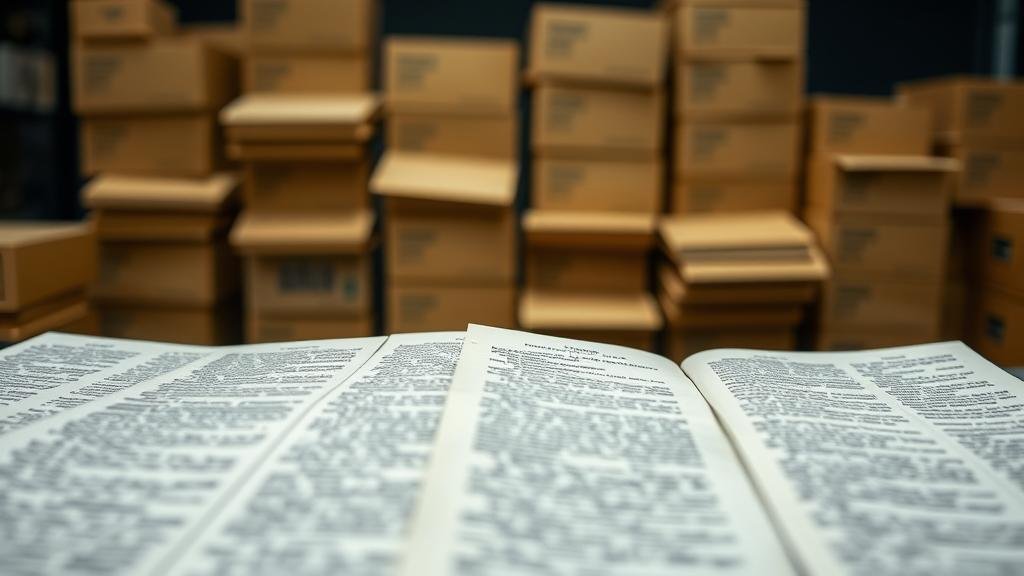Leveraging AI to Automate Data Sorting in Large Historical Text Collections
Leveraging AI to Automate Data Sorting in Large Historical Text Collections
The explosion of historical data due to digitization initiatives over the past two decades presents unique challenges and opportunities for researchers and data scientists. Traditional methods of sorting and analyzing large collections of historical texts can be labor-intensive and prone to human error. Advanced artificial intelligence (AI) technologies can automate these processes, enhancing access to historical data and enabling deeper insights. This article explores how AI can be utilized to automate data sorting in large historical text collections.
1. The Importance of Historical Text Collections
Historical text collections serve as invaluable resources for understanding past societies, cultures, and events. Institutions such as the Library of Congress in the United States and the British Library in the United Kingdom have amassed extensive collections that span centuries. For example, the Library of Congress boasts over 170 million items, including manuscripts, newspapers, and legal documents, dating back to the 17th century. These texts can inform social sciences, humanities, and even machine learning models for natural language processing (NLP).
2. The Challenges of Data Sorting
Despite the value these texts hold, sorting and organizing them for research can be a monumental task due to the following challenges:
- Volume: The sheer amount of data can overwhelm traditional sorting methods. For example, an estimated 2.5 million terabytes of data are generated daily, which includes historical texts.
- Diversity: Historical texts come in various formats, languages, and styles, complicating the sorting process.
- Quality: Many older texts may suffer from degradation, making digitization and subsequent sorting less than straightforward.
3. AI Techniques for Data Sorting
AI offers numerous techniques that can facilitate the automation of sorting historical text collections:
3.1 Natural Language Processing (NLP)
NLP allows for the interpretation of human language in a way that machines can understand. Techniques such as named entity recognition (NER) can identify and categorize key information within texts, such as names of people, places, and dates. For example, the Stanford NLP library has been instrumental in extracting structured information from unstructured text.
3.2 Machine Learning Algorithms
Machine learning algorithms can analyze historical texts to detect patterns and categorize data efficiently. Classification algorithms, such as Support Vector Machines (SVM) and Random Forests, can be trained to sort texts based on predefined categories, such as genre, author, or historical period. Recent work by Maluf et al. (2021) demonstrated the successful application of SVM to categorize literary works into specific themes.
3.3 Optical Character Recognition (OCR)
Optical Character Recognition (OCR) technology is crucial for digitizing printed texts. Modern OCR employs deep learning models to achieve high accuracy rates, enabling the sorting of scanned historical documents into searchable digital formats. According to a study by Khandelwal et al. (2020), advanced OCR systems can achieve up to 98% accuracy when processing high-quality scans.
4. Real-World Applications
Several initiatives have already leveraged AI for sorting historical texts effectively:
- The Digital Public Library of America: This initiative uses AI to sort and categorize millions of digitized items from across the country, making historical data more accessible to the public.
- The British Library’s Computer Vision Project: This project employs various AI techniques, including OCR and NLP, to enhance the sorting of historical newspaper collections.
5. Ethical Considerations
While the automation of data sorting through AI presents numerous advantages, ethical considerations must be addressed:
- Data Bias: AI systems may inherit biases from historical texts. Researchers must ensure diversity and representation in training datasets.
- Preservation of Context: Automated sorting may overlook the nuanced context of historical texts, leading to misinterpretation.
6. Conclusion and Future Directions
The integration of AI into the sorting of large historical text collections offers significant efficiencies and insights that can enhance research and accessibility. By utilizing advanced NLP techniques, machine learning algorithms, and OCR technologies, historians and data scientists can navigate vast amounts of data more effectively. Future research should focus on improving accuracy, addressing ethical concerns, and developing interdisciplinary collaborations that can maximize the benefits of AI in historical research.
In summary, the automation of data sorting through AI transcends traditional methodologies, enabling unprecedented access to rich historical resources. Researchers and institutions are encouraged to adopt these technologies to innovate the study of historical texts.



